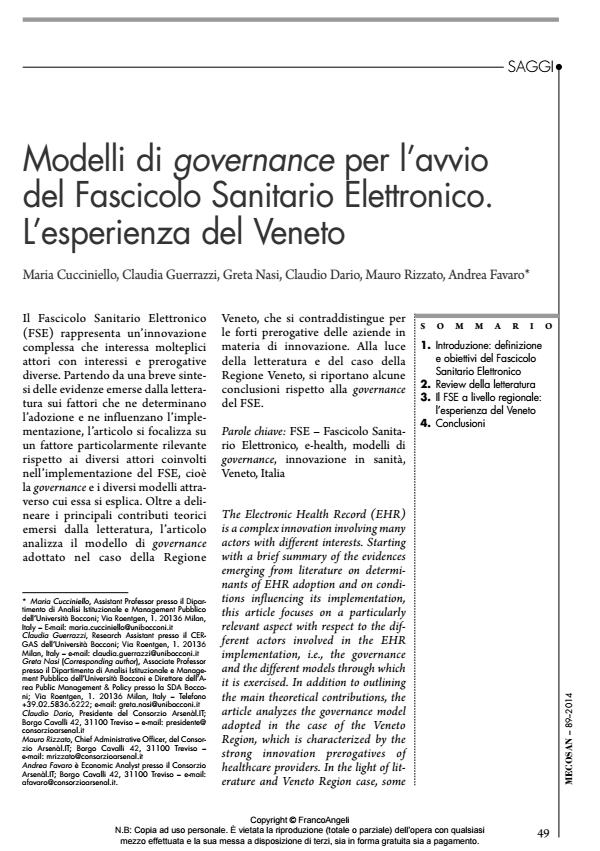Modelli di governance per l’avvio del Fascicolo Sanitario Elettronico. L’esperienza del Veneto
Journal title MECOSAN
Author/s Maria Cucciniello, Claudia Guerrazzi, Greta Nasi, Claudio Dario, Mauro Rizzato, Andrea Favaro
Publishing Year 2014 Issue 2014/89
Language Italian Pages 22 P. 49-70 File size 851 KB
DOI 10.3280/MESA2014-089004
DOI is like a bar code for intellectual property: to have more infomation
click here
Below, you can see the article first page
If you want to buy this article in PDF format, you can do it, following the instructions to buy download credits

FrancoAngeli is member of Publishers International Linking Association, Inc (PILA), a not-for-profit association which run the CrossRef service enabling links to and from online scholarly content.
The Electronic Health Record (EHR) is a complex innovation involving many actors with different interests. Starting with a brief summary of the evidences emerging from literature on determinants of EHR adoption and on conditions influencing its implementation, this article focuses on a particularly relevant aspect with respect to the different actors involved in the EHR implementation, i.e., the governance and the different models through which it is exercised. In addition to outlining the main theoretical contributions, the article analyzes the governance model adopted in the case of the Veneto Region, which is characterized by the strong innovation prerogatives of healthcare providers. In the light of literature and Veneto Region case, some conclusions with respect to EHR governance are presented.
Keywords: Electronic Health Record, e-health, Governance, Healthcare Innovation, Veneto Region, Italy
Maria Cucciniello, Claudia Guerrazzi, Greta Nasi, Claudio Dario, Mauro Rizzato, Andrea Favaro, Modelli di governance per l’avvio del Fascicolo Sanitario Elettronico. L’esperienza del Veneto in "MECOSAN" 89/2014, pp 49-70, DOI: 10.3280/MESA2014-089004